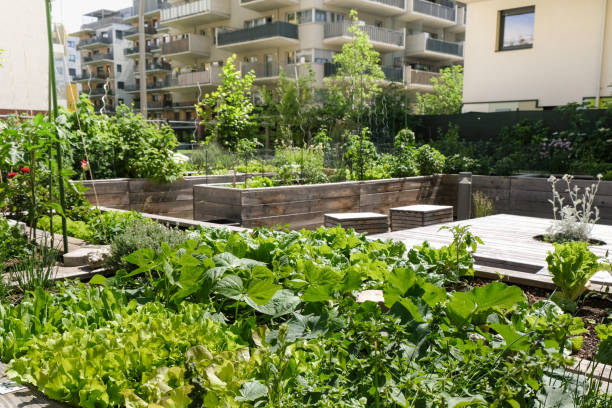Vertical planting solutions for compact balconies and patios
Compact outdoor spaces can still support rich, productive gardens when you shift upward. Vertical planting maximizes limited balcony and patio footprints by using walls, railings, hanging planters, and stacked systems. This approach fits apartment living, small decks, and shared terraces while supporting pollinators, edible plants, and attractive landscaping in confined areas.

Vertical planting transforms a small balcony or patio into a layered, functional garden without expanding the footprint. By thinking in terms of height and depth rather than ground area, you can combine planters, climbing supports, and smart substrates to grow ornamentals, herbs, and even small vegetables. Proper selection of soil, irrigation, and container types will keep plants healthy while minimizing maintenance and water use.
How can vertical landscaping work on a balcony?
Vertical landscaping on balconies relies on creating layers: trellises attached to walls or railings, stacked planter systems, and hanging baskets that occupy airspace above the floor. Choose structures rated for outdoor use and consider weight limits for railings or flooring. Lightweight potting mixes, modular planters, and freestanding vertical frames make it possible to introduce vines, trailing plants, and compact shrubs without overloading the deck or balcony. Integrate decking-friendly planters or stand-alone vertical gardens for renters to avoid permanent fixtures.
What planters and upcycling options suit compact patios?
Selecting the right planters matters for drainage, root space, and thermal performance. Look for deep narrow troughs for herbs, pocket planters for living walls, and stackable pots for layered beds. Upcycling everyday items—wooden pallets, shoe organizers, reclaimed gutters, or old crates—can create attractive, budget-friendly vertical planters when properly lined and waterproofed. Ensure containers have sufficient drainage holes and use liners to protect surfaces like decking. Upcycled planters offer character and reduce waste while supporting diverse planting schemes.
How to manage irrigation, soil, and mulch in vertical setups?
Watering and growing media are critical because vertical containers dry faster than in-ground beds. Use well-draining potting mixes blended with compost and moisture-retaining components like coconut coir. Apply a thin layer of mulch on top of containers to reduce surface evaporation. For irrigation, consider drip tubing, micro-sprayers, or self-watering systems designed for containers to deliver consistent moisture without overwatering. Position containers so runoff doesn’t damage building surfaces; use saucers or integrated reservoirs where appropriate.
How does composting and seed selection help vertical gardens?
Small-scale composting, such as countertop Bokashi or a compact worm bin, produces nutrient-rich amendments perfect for container blends. Incorporating finished compost into potting mix improves fertility and structure, supporting vigorous growth in confined soils. Choose seeds and seedlings suited to containers and vertical constraints—compact varieties, dwarf cultivars, and trailing types. Quick-growing salad greens, cherry tomatoes on determinate vines, compact peppers, and many herbs respond well to vertical cultivation when provided with adequate sunlight and nutrients.
How to encourage pollinators and choose plants for small spaces?
Even tiny vertical gardens can benefit pollinators. Include pollinator-friendly plants such as small-flowered salvias, lavender, borage, and native wildflower mixes that fit containers. Position flowering units where pollinators can access them—near edges or gaps in railings—and avoid systemic insecticides. Mix ornamental and edible species to boost biodiversity: flowering herbs attract bees while leafy plants add texture. If space allows, dedicate a small planter for a continuous succession of blooms to provide resources across the season.
How to maintain vertical plantings with pruning and xeriscaping principles?
Regular pruning keeps vertical plantings tidy and productive—pinch back fast-growing herbs, remove spent flowers, and thin vines that crowd trellises. Adopt xeriscaping principles by grouping low-water plants together, choosing drought-tolerant species, and improving soil organic matter to retain moisture. Mulch and efficient irrigation further reduce water needs. For decks and patios, select rot-resistant materials for frames and treat wood where required; inspect fixings and fasteners seasonally to ensure safety and longevity.
Conclusion Vertical planting makes efficient use of limited outdoor areas, blending functionality and aesthetics for balconies and patios worldwide. By selecting appropriate planters, managing soil and irrigation, and incorporating compost and pollinator-friendly species, small spaces can deliver diverse, resilient plantings. Thoughtful maintenance—pruning, mulching, and patient plant selection—will keep vertical gardens productive and attractive across seasons.





